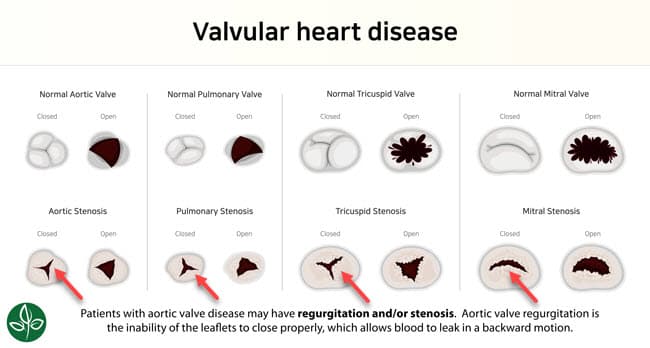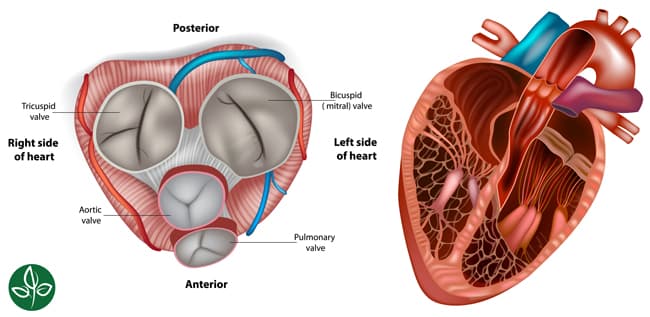Transcatheter aortic valve replacement (TAVR) is a minimally invasive procedure to replace a narrowed aortic valve that fails to open properly due to a valve disease called aortic valve stenosis. Transcatheter aortic valve replacement is sometimes called transcatheter aortic valve implantation (TAVI). TAVR may be an option for people who are considered at intermediate or high risk of complications from a traditional surgical aortic valve replacement. TAVR may also be an option for certain patients who can't undergo open-heart surgery.
To understand the benefits of a transcatheter aortic valve replacement (TAVR) procedure, it is important to understand the condition that is being treated: severe aortic stenosis. Severe aortic stenosis is a serious health problem that can lead to death if left untreated.
What is severe aortic stenosis?
The aortic valve is one of four valves in the heart. Each valve opens and closes like a gate to ensure the proper flow of blood through the heart. The aortic valve has three-leaflets (flaps of tissue) that open and close like gates to control the blood flow from the left ventricle to the aorta, the largest artery in the body. Patients with aortic valve disease may have regurgitation and/or stenosis. Aortic valve regurgitation is the inability of the leaflets to close properly, which allows blood to leak in a backward motion. Stenosis or narrowing of this valve prevents the normal forward flow of blood to the rest of the body.

Aortic valve stenosis may be caused by a birth defect, rheumatic fever, or radiation therapy, but it is also a progressive disease that can be related to aging. Over time, calcium (mineral deposits) build up on the aortic valve leaflets, causing
them to become stiff and unable to open and close fully. When this happens, the heart has to work much harder to push oxygen-rich blood through the smaller opening of the valve. This reduction of blood flow can cause mild to severe symptoms. However, some patients with severe aortic stenosis may not have any outward symptoms and may be going about their daily activities without knowing they have a diseased valve.
What are the symptoms of severe aortic stenosis?
- Chest pain
- Shortness of breath
- Fatigue
- Light-headedness, dizziness, and/or fainting
- Swollen ankles and feet
- Rapid fluttering heartbeat
- Difficulty walking short distances
- Difficulty when exercising
- Need to sleep sitting upright rather than lying flat in bed
- Unable to do activities that you used to enjoy
How is severe aortic stenosis treated?
In the past, the gold standard for treatment of severe aortic stenosis was an extensive open-heart surgery requiring the use of a heart-lung machine. Treatment options were limited. Today, a less invasive choice is available. The FDA first approved transcatheter aortic valve replacement (TAVR) in 2011 for certain patients with symptomatic aortic stenosis.
Transcatheter aortic valve replacement (TAVR) is available at San Antonio Regional Hospital for patients who are deemed to be at an intermediate or high risk for open heart surgery.

What happens during the Transcatheter Aortic Valve Replacement (TAVR) procedure?
The transcatheter aortic valve replacement (TAVR) approach is the replacement of the aortic valve using a catheter-based system. Instead of opening up the chest, as in a surgical approach, the TAVR procedure can be performed in various ways depending upon the combined recommendation of the surgeon and the interventional cardiologist:
After access is obtained, the catheter containing the new artificial aortic heart valve is carefully guided into position within the patient’s diseased valve. This is achieved using x-ray guidance. State-of-the-art equipment used in San Antonio Regional Hospital’s Heart Center allows for precise positioning of the artificial valve. Once it is deployed, the new valve will work immediately. A trans-esophageal (via the esophagus) echocardiogram is performed immediately following the deployment of the new transcatheter heart valve (THV) to check for a paravalvular leak (a leak around the valve replacement). Patients can also expect another echocardiogram the day following the procedure to ensure that the valve is functioning properly. This new minimally invasive TAVR procedure often results in quicker relief of symptoms and faster recovery with less time in the hospital (2-4 days on average) than patients who undergo traditional open-heart surgery.
What is the process of qualifying for a Transcatheter Aortic Valve Replacement (TAVR) procedure?
The decision to treat aortic stenosis with transcatheter aortic valve replacement (TAVR) is made after consultation with a multidisciplinary group of medical and surgical heart specialists who together determine the best treatment option for each
individual.
Upon referral to our valve program, patients should expect to undergo several diagnostic tests. These tests may be ordered by our interventional cardiologists or cardiac surgeons who are specially trained in the TAVR procedure. The results of the following exams are reviewed by our multi-disciplinary team to determine if you qualify as a candidate for TAVR.
- Echocardiogram: this is an ultrasound of the heart that allows physicians to evaluate the heart muscle and heart valves.
- Right and left heart catheterization: this procedure is often done through the wrist (radial approach) or the leg (femoral approach) to obtain measurements and assess any coronary artery disease or valve disease.
- Pulmonary function test (PFT): this screening test may also be done to check for any lung problems.
- Electrocardiogram (ECG/EKG): this diagnostic test is quick, safe, and painless. An EKG allows physicians to check your heart rhythm and any abnormal blood flow (ischemia) or heart muscle problems such as a thickened heart (hypertrophy).
- CT scan of the chest and abdomen: this specific CT test is designed to assess for calcium buildup and tortuosity (twisting) of the major arteries and valves.
How do I find out if I am a candidate for Transcatheter Aortic Valve Replacement (TAVR)?
If you experience any of the symptoms above or know someone who is having these symptoms, make an appointment with your cardiologist as soon as possible. Your cardiologist or primary care physician may refer you to San Antonio Regional Hospital for further screening. Self-referrals are also accepted. For further questions or for a referral, please contact our valve coordinator at 909.920.6192.


